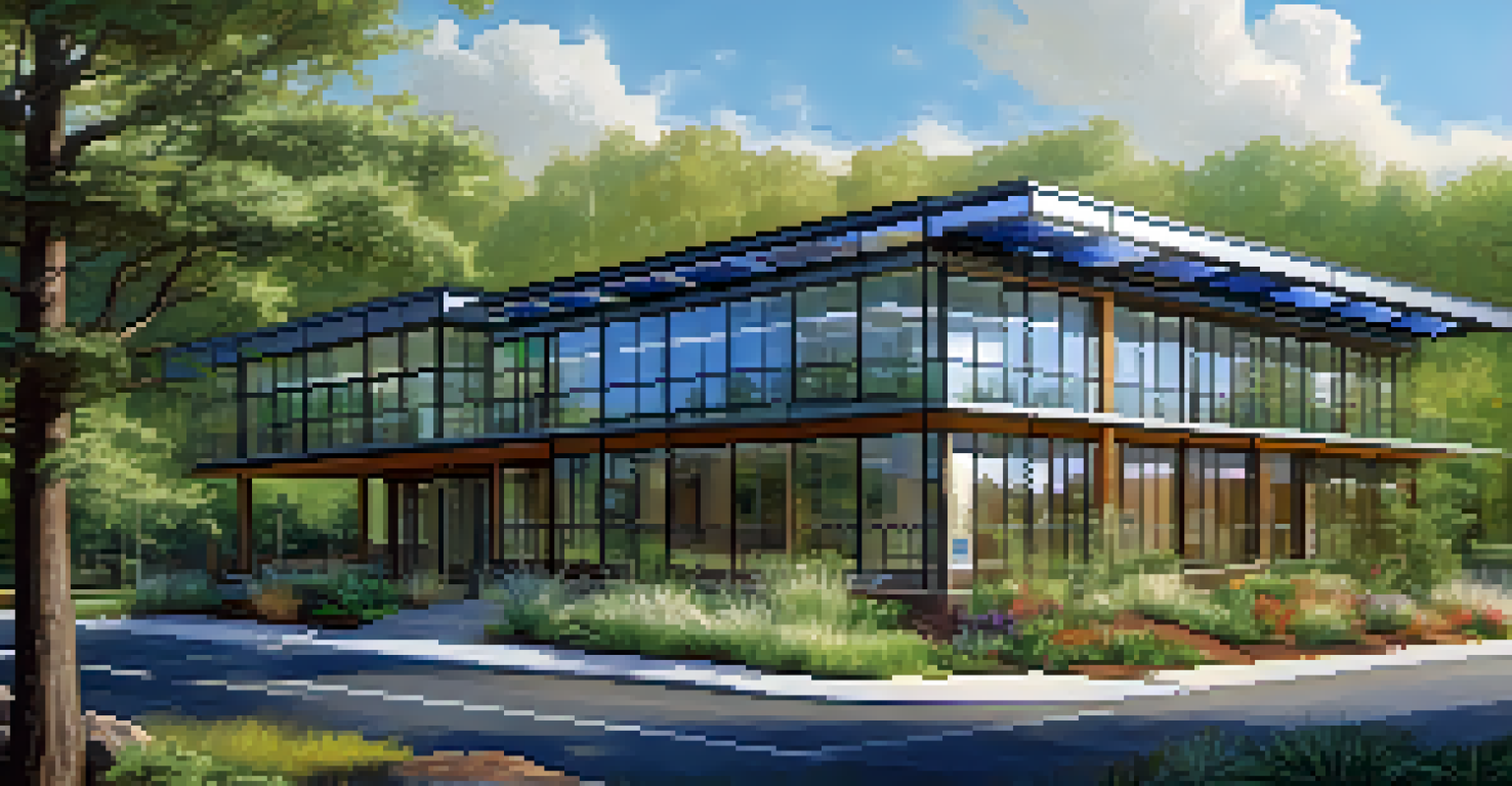The Connection Between Urban Planning and Real Estate Analysis

Understanding Urban Planning and Its Goals
Urban planning is the process of designing and organizing urban spaces to ensure they are functional, sustainable, and livable. It involves creating land use plans that dictate how different areas of a city will be developed, including residential, commercial, and recreational spaces. The ultimate goal is to improve the quality of life for residents while also accommodating growth and change in the urban environment.
Urban planning is not just about buildings and roads; it’s about creating a community that thrives.
By considering factors such as population density, transportation, and environmental concerns, urban planners aim to create balanced communities. For example, a well-planned neighborhood might include parks, schools, and shops within walking distance to reduce the need for cars. This kind of foresight not only enhances livability but also increases property values in well-planned areas.
Ultimately, urban planning is about more than just buildings and streets; it’s about creating vibrant communities where people can thrive. This foundational work lays the groundwork for real estate analysis, as the decisions made by urban planners directly impact market trends and property investments.
The Role of Real Estate Analysis in Urban Development
Real estate analysis involves evaluating various factors that influence property values, including location, market trends, and economic indicators. This analysis is crucial for developers and investors looking to make informed decisions about where to buy or develop properties. As urban planners shape the landscape of a city, real estate analysts assess how these changes will impact the market dynamics.

For instance, the introduction of a new transportation line can significantly boost property values in adjacent neighborhoods. Real estate analysts will closely monitor these developments, providing insights that help investors capitalize on emerging opportunities. By understanding these connections, stakeholders can make strategic decisions that align with urban planning goals.
Moreover, real estate analysis also considers the social and economic implications of urban planning. Analysts look at how developments can enhance community well-being, which, in turn, can affect the desirability of a location. This symbiotic relationship between urban planning and real estate analysis is essential for fostering sustainable growth.
How Zoning Laws Affect Real Estate Markets
Zoning laws are regulations that dictate how land can be used in different areas of a city. These laws are a key tool for urban planners, as they help to manage growth and ensure that developments are in line with the community’s vision. However, they also play a significant role in real estate analysis, as zoning can greatly influence property values and investment potential.
Sustainable urban development is a vital part of ensuring the future of our cities and communities.
For example, an area zoned for mixed-use development might attract higher property values due to its appeal to both residential and commercial interests. Conversely, strict zoning laws that limit development can stifle growth and keep property values depressed. Real estate analysts must stay informed about these regulations to provide accurate forecasts and advice to developers and investors.
In essence, understanding zoning laws is crucial for anyone involved in real estate. These laws not only shape the physical landscape but also determine the financial viability of property investments, reinforcing the interconnectedness of urban planning and real estate analysis.
The Impact of Transportation Planning on Real Estate
Transportation planning is a critical aspect of urban planning that directly affects real estate markets. The availability and quality of public transport can significantly influence property values, as easy access to transit options often makes an area more desirable. For instance, homes near subway stations or bus routes tend to command higher prices due to their convenience.
Moreover, urban planners must consider future transportation needs when designing cities. As cities grow and change, the demand for efficient transportation solutions increases. Real estate analysts play a pivotal role in this process by assessing how transportation developments will impact property values and investment opportunities.
In summary, transportation planning and real estate analysis go hand in hand. By understanding how transit options shape urban landscapes, stakeholders can make strategic decisions that enhance both community connectivity and property investment returns.
The Influence of Environmental Sustainability on Urban Planning
In recent years, environmental sustainability has become a significant focus in urban planning. Planners are increasingly prioritizing green spaces, energy-efficient buildings, and sustainable transportation options. This shift not only benefits the environment but also affects real estate markets, as properties that embrace sustainability often attract environmentally-conscious buyers.
For example, neighborhoods with ample parks and eco-friendly developments tend to have higher property values, as they appeal to a growing demographic that values sustainability. Real estate analysts must recognize these trends and incorporate them into their assessments, as they can signal shifting preferences in the market.
Ultimately, the connection between environmental sustainability and urban planning shapes the future of real estate. As cities strive to become more sustainable, stakeholders must adapt to these changes to remain competitive and meet the demands of modern buyers.
The Role of Community Engagement in Urban Development
Community engagement is a vital component of urban planning, as it ensures that the voices of residents are heard in the decision-making process. Planners often hold public meetings and forums to gather feedback on proposed developments, fostering a sense of ownership among community members. This engagement not only enhances the planning process but also impacts real estate markets.
When communities feel involved in the planning process, they are more likely to support new developments, leading to smoother approvals and increased property values. Real estate analysts must pay attention to community sentiments, as local opposition or support can significantly influence the success of a project.
In essence, community engagement bridges the gap between urban planning and real estate analysis. By recognizing the importance of local voices, stakeholders can create developments that truly meet the needs of residents while enhancing property values.
The Future of Urban Planning and Real Estate Analysis
As cities continue to evolve, the relationship between urban planning and real estate analysis will only grow more complex. Emerging technologies, demographic shifts, and environmental challenges will shape the future landscape. Urban planners will need to stay ahead of these trends to create resilient communities, while real estate analysts will play a crucial role in interpreting these changes for investors.
For instance, advancements in data analytics can provide deeper insights into market trends, helping stakeholders make informed decisions based on real-time information. Planners and analysts will need to collaborate closely to ensure that urban developments align with market demands and community needs.

Looking ahead, the synergy between urban planning and real estate analysis will be essential for creating sustainable, livable cities. By working together, these fields can help shape a future that balances growth with community well-being.